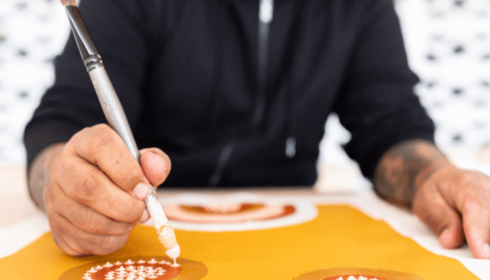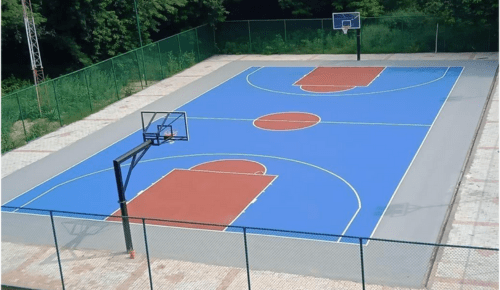When it comes to basketball courts, the sports court flooring is more than just a surface to play on—it’s the foundation of the game. Whether you’re designing a professional facility, a school gymnasium, or a recreational court, the right flooring is essential for safety, performance, and durability. In this guide, we’ll dive deep into the different types of basketball court flooring, their benefits, and factors to consider when choosing the right surface for your court.
Why Does Flooring Matter?
Basketball is a fast-paced sport that involves frequent jumping, running, pivoting, and sharp direction changes. The flooring plays a crucial role in ensuring:
- Player Safety: A surface that is too hard or slippery can increase the risk of injuries. The right flooring provides the perfect balance of grip and cushioning, which reduces strain on joints and prevents falls.
- Performance: A quality floor can enhance ball bounce, provide optimal traction, and ensure consistent play. This is especially important for professional courts, where every movement counts.
- Durability: Basketball courts are exposed to heavy use. Whether it’s indoor or outdoor, your flooring needs to withstand constant activity, environmental factors, and wear and tear.
- Aesthetic Appeal: The visual aspect of the court, including logo placement, color schemes, and line markings, is essential for branding and creating an engaging environment.
Types of Basketball Court Flooring
There are several types of basketball court flooring options to choose from, each offering unique benefits depending on the location of the court, budget, and usage.
1. Wooden Flooring
Wooden courts have been the traditional choice for indoor basketball, especially for professional-level play. This type of flooring is most commonly found in gyms, arenas, and sports complexes.
Key Benefits:
- Durability: High-quality hardwood, such as maple, is incredibly durable and long-lasting.
- Shock Absorption: Wooden floors provide excellent cushioning, which reduces impact on players’ joints and minimizes the risk of injury.
- Classic Look: A wooden floor exudes a traditional, professional feel, making it ideal for competitive games and tournaments.
Downsides:
- Maintenance: Wooden courts require frequent maintenance, such as refinishing and resealing, to maintain their appearance and performance.
- Cost: Hardwood floors tend to be more expensive to install and maintain.
2. Acrylic Flooring
Acrylic courts are designed specifically for both indoor and outdoor basketball courts. These floors are made of a blend of synthetic materials, creating a smooth, durable surface.
Key Benefits:
- Low Maintenance: Acrylic surfaces are much easier to maintain than wooden floors. They don’t require refinishing and can simply be cleaned with a mop.
- Weather-Resistant: Perfect for outdoor courts, acrylic is not affected by weather conditions like wooden floors are.
- Customization: Acrylic floors come in various colors and patterns, allowing you to customize the court’s design.
Downsides:
- Less Cushioning: Acrylic does not offer the same level of shock absorption as wood or rubber floors, which can lead to higher impact stress on players’ joints.
3. Rubber Flooring
Rubber floors, often found in recreational basketball courts or gyms, are soft, slip-resistant, and provide excellent shock absorption.
Key Benefits:
- Safety: The cushioning properties of rubber floors make them a safe option, especially in recreational spaces where players may not be as experienced.
- Noise Reduction: Rubber flooring can dampen noise, which is helpful in indoor spaces that require quiet.
- Durability: Rubber is highly durable and resistant to wear, making it ideal for heavy use.
Downsides:
- Surface Slip: While rubber flooring provides good grip, it may not offer the same level of traction as other flooring options like hardwood.
4. Vinyl Flooring
Vinyl flooring is another synthetic option that has become increasingly popular for basketball courts. It offers a durable, low-maintenance surface that is suitable for both indoor and outdoor use.
Key Benefits:
- Cost-Effective: Vinyl is typically less expensive than other options, such as hardwood or rubber flooring.
- Easy Installation: Vinyl is relatively easy to install and can be done quickly with fewer disruptions.
- Comfort: Vinyl provides a comfortable surface for players, making it a popular choice for recreational and community courts.
Downsides:
- Limited Durability: While durable, vinyl may not last as long as wood or acrylic when exposed to extreme weather or heavy foot traffic.
Factors to Consider When Choosing Basketball Court Flooring
Selecting the right flooring for your basketball court depends on various factors. Here’s what you should keep in mind:
1. Indoor vs. Outdoor Use
- Indoor Courts: If your court is indoors, you may want to opt for a wooden or acrylic surface, as they provide a high level of performance.
- Outdoor Courts: Outdoor courts require a weather-resistant option like acrylic, rubber, or vinyl that can handle exposure to the elements.
2. Player Age and Skill Level
- For youth or recreational courts, rubber or vinyl may be the best choice due to their shock absorption properties and ease of maintenance. Professional courts demand wooden or acrylic floors for the best performance.
3. Budget
- The initial cost of the flooring material and the long-term maintenance costs should factor into your decision-making process. While wooden floors are expensive, their durability may save you money in the long run.
4. Maintenance
- Consider the upkeep involved with each flooring option. Wooden floors require more care than vinyl or acrylic, which can be simply wiped down.
Conclusion
Basketball court flooring is a critical element that affects both performance and safety. Whether you’re looking to build a professional sports arena or a community court, understanding the advantages and drawbacks of each flooring type will help you make the right decision. By considering factors like location, budget, and maintenance, you can ensure that your court not only meets functional needs but also enhances the overall playing experience.
When choosing your flooring, it’s important to select a trusted sports court supplier who can provide high-quality, durable materials, as well as offer installation services that adhere to industry standards. With the right floor in place, you’ll set the stage for countless hours of gameplay and competition, making the most of every game.






